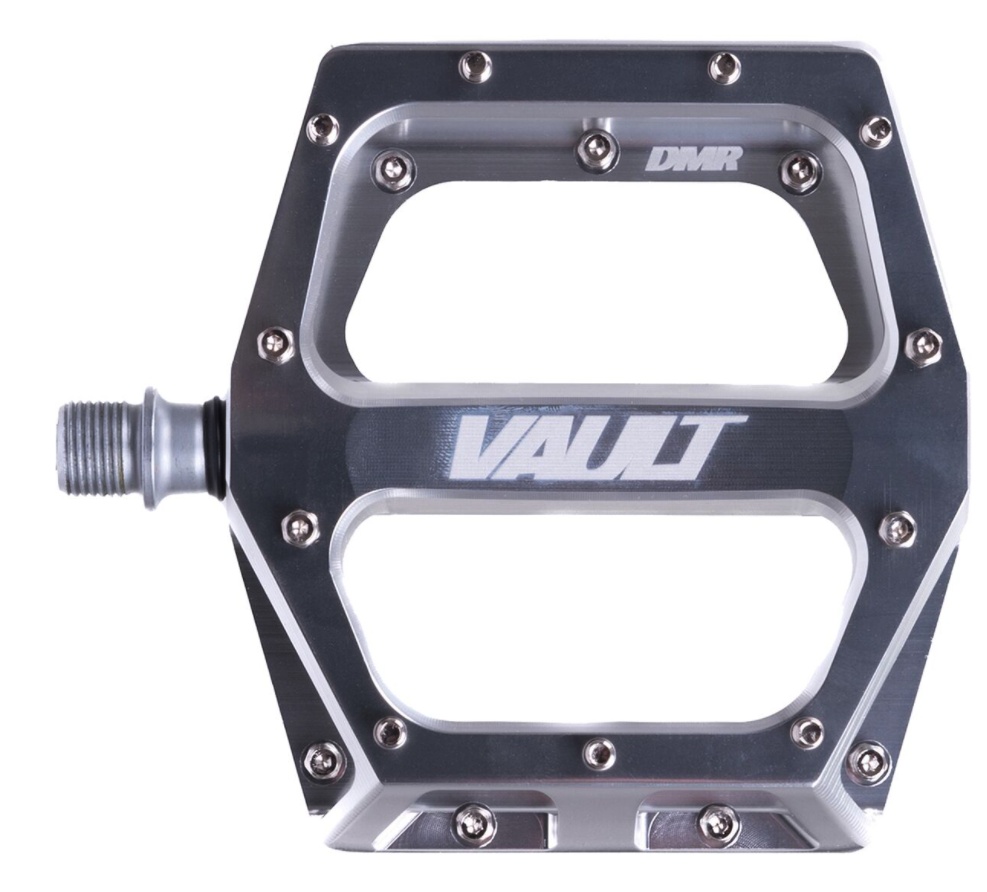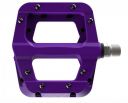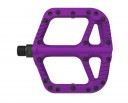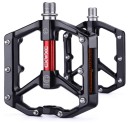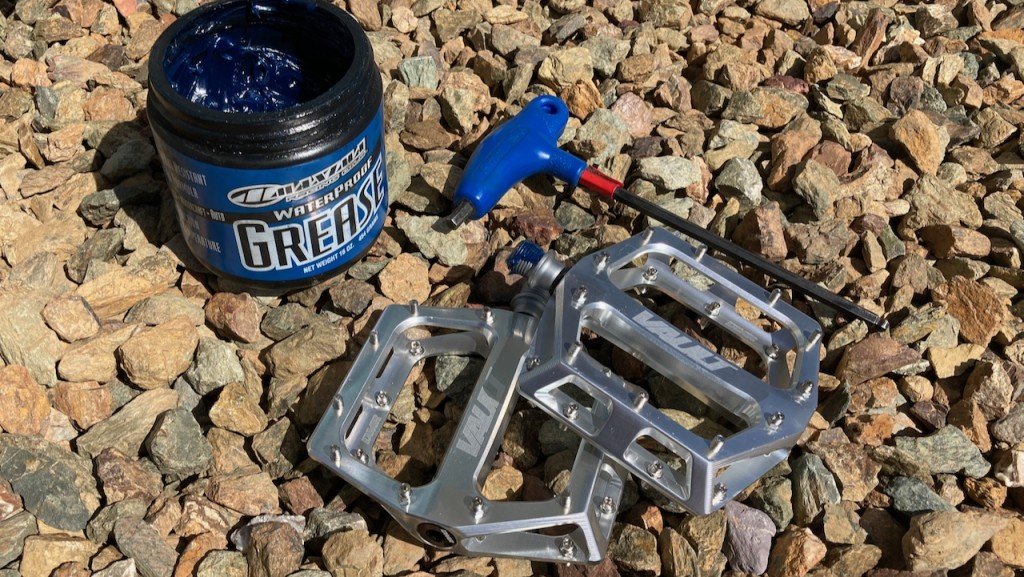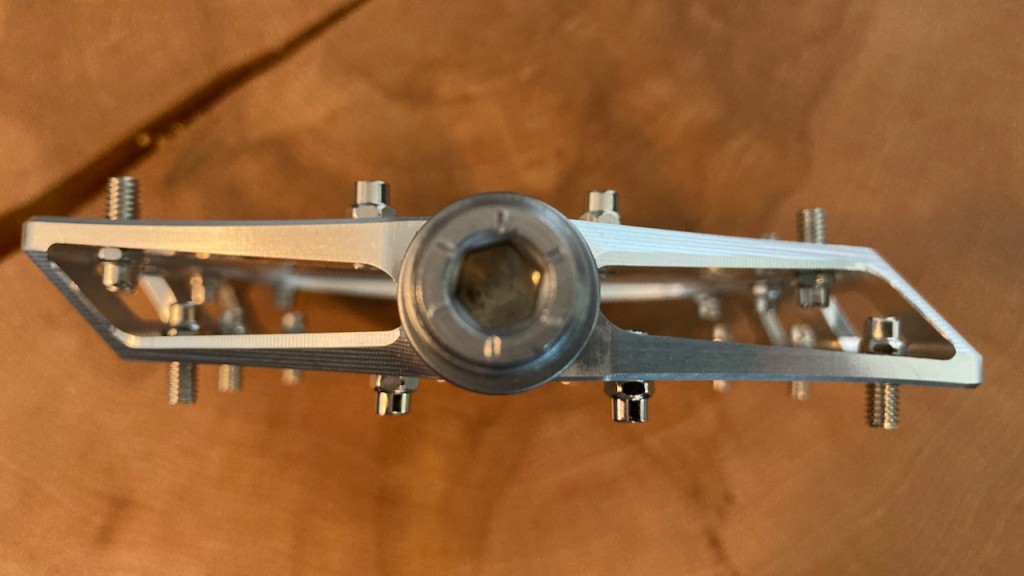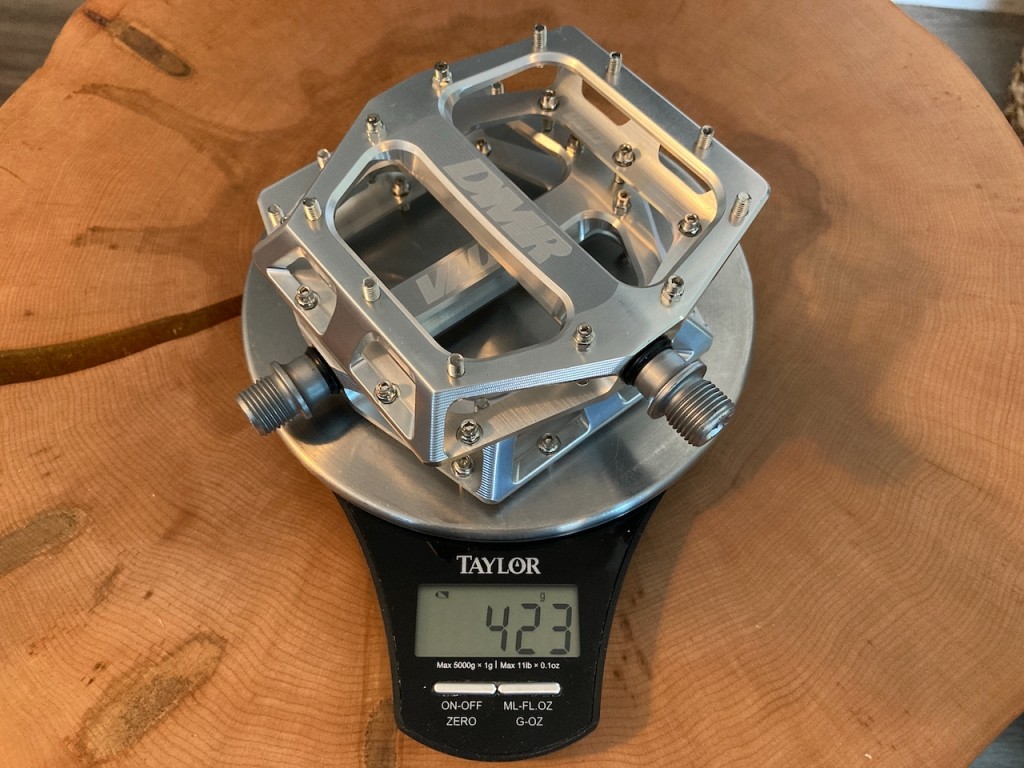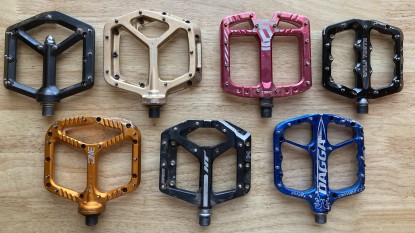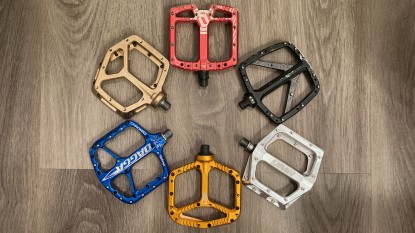DMR Vault Review
Our Verdict
Compare to Similar Products
 This Product
DMR Vault | |||||
|---|---|---|---|---|---|
| Awards | Best Pedal for your Buck | Best Composite Pedal | Best On A Tight Budget | Best For Everyday Commuting | |
| Price | $117.56 at Amazon Compare at 2 sellers | $29.73 at REI Compare at 4 sellers | $39.99 at Evo Compare at 4 sellers | $27 List $24.99 at Amazon | $22 List $23.98 at Amazon |
Overall Score  |
|||||
| Star Rating | |||||
| Bottom Line | This popular pedal will get the job done, but it does not stand out in any of our test metrics | Less-expensive flat pedal option for those who like to put their equipment to the test | A quality composite pedal at an outstanding price point | A budget oriented pedal that offers adequate grip and a midsize platform but may be less apealing compared to established brands | An inexpensive pedal that works great as a commuter, but less suitable as a true mountain bike pedal |
| Rating Categories | DMR Vault | Race Face Chester | OneUp Components Co... | Fooker Nylon Fiber | CXWXC CX-930 Pedals |
| Grip and Traction (25%) | |||||
| Platform (25%) | |||||
| Mobility (20%) | |||||
| Servicing (15%) | |||||
| Weight (15%) | |||||
| Specs | DMR Vault | Race Face Chester | OneUp Components Co... | Fooker Nylon Fiber | CXWXC CX-930 Pedals |
| Measured Weight (per pair) | 423 g | 358 g | 359 g | 370 g | 365 g |
| Traction Pins (per side) | 11, 2mm hex head flip pins | 8, 2.5 mm hex head bottom loading | 10, 2.5 mm hex head bottom loading | 8, 2.5 mm hex head bottom loading | 8, e4 torx top loading |
| Measured Platform Dimensions (millimeters) | 105 mm x 105 mm | 110 mm x 101 mm | 114 mm x 104 mm | 110 mm x 100 mm | 104 mm x 102 mm |
| Platform Profile (millimeters) - not including pins | 17.6 mm at edges,16.8 at axle | 14 mm leading and trailing edges, 17 mm center of spindle | 13.8 mm leading and trailing edges, 16.9 mm at axle | 14 mm at edges, 18 mm at axle | 15.5 mm at edge, 18mm at axle |
| Concavity | 1 mm difference from effective edges to middle of axle | 3 mm difference from effective edges to center of pedal | slight convexity | 4 mm difference from effective edge to center of pedal | 5mm difference from effective edge to center of pedal |
| Q Factor / Distance from cranks to furthest pin | 113mm | 103 mm | 106 mm | 103 mm | 104 mm |
| Bearings | High load DU bushing and cratridge bearing | Cartridge bearings and DU bushings | DU cartridge | 3 sealed cartridge bearings | sealed cartridge bearing |
| Body Material | 6061 Aluminum | Nylon Composite | Nylon Composite | Nylon Fiber | CNC Aluminum |
| Pedal Wrench Type | 6 mm | 15 mm pedal spanner, 8 mm hex | 15 mm pedal spanner, 6 mm hex | 8 mm hex | 8 mm hex |
Our Analysis and Test Results
The Vault is a long-standing favorite pedal for many riders. In our testing we found the grip to be unremarkable, especially in comparison to other pedals in our line-up. The Vault has a smaller concave platform of only 105mm x 105mm and is stable and supportive underfoot, especially for riders with smaller feet. Because the pins are not super grippy, there is more foot mobility with the Vault than other pedals, which some riders may enjoy. With flat pedals becoming lighter, thinner, and having adjustable height pins the Vault seems rather unexceptional. It certainly gets the job done and is well made but lacks the grip and servicing ease found in pedals of a similar price.
Performance Comparison
Grip and Traction
During our testing, the grip of the Vault was less than that of the top performers in our review. The Vault uses their Flippin design, this design has shorter pins near the axle of the pedal and longer pins at the outside edges. These pins can be moved around or flipped to help you dial in the grip for your preferences. The 11 Flippin's line the perimeter of the platform and there are no pins on the axle.
DMR uses shorter pins nearest the axle of the Vault. It has a concave design with longer pins at the leading and trailing edges, which help the foot to conform more to the shape of the pedal. When we tested with different pedals on each side of the crank, the differences in grip became pronounced with the Vault having less grip than the pedal on the opposite side of the bike. We also rode the Vaults with a variety of shoes that all have a different outsole, including MAX GRIP from Ride Concepts, Giro's Tack Rubber, and Vibram rubber on Bontrager shoes. We had trouble finding our “sweet spot” for foot placement and noticed our feet sliding on the pedals with shoes from both Ride Concepts and Bontrager.
Platform
The Vault's platform measures 105mm x 105mm and in our testing did not hang up in rock pinches as much as other pedals in our test. It has a chamfered edge design meaning it can glance off of rocks more easily.
Between the axle and the leading edge, there is a 38mm gap and between the axle and the trailing edge the gap is only 30mm. This smaller gap helps support the foot since there is a smaller void which also reduces the need for a brace from the axle to the perimeter of the pedal body.
The Vault has a slight concave design that measures 17.6mm at the leading and trail edges and 16.8mm at the axle. Our testers with a size EU40 shoe find the Vault's platform size to be very comfortable and stable and because of their smaller width, we also experienced far fewer pedal strikes because our shoe covers the entire platform.
Mobility
DMR uses a high load DU bushing and cartridge bearing on the Vault which spins smoothly and predictably. We were able to quickly reposition our foot when it slipped off the pedal and did not have to worry about it spinning out of the way. The rotation on the crank is not super fast and has some drag to it, making it easier to put your foot back on if it slips off.
Our feet were not glued to the pins of the pedals, making adjustments easier than with other pedals. For those who want a little less pedal traction the Vault is a good choice because of its mobility and smooth and predictable spin.
Servicing
Accessing the Vault's 4140 Chromoly steel axle involves a few more steps and a few more tools than the easiest pedals to service in our test. You'll need a 6mm hex and an 8mm socket with a handle to service the axle. After removing the end cap, you'll need to insert the 6mm hex into the spindle and the 8mm socket onto the nut. The nut is inside the axle but not so deep to require an extension on the socket and after a few ratchets or rotations, the axle will be free from the pedal body.
Weight
At 423-grams per pair the Vault is certainly towards the heavier end of the spectrum of pedals in our test. Given the smaller platform, we would expect them to be a bit lighter weight.
Value
The Vault is one of the more expensive pedals in our test. When taking price into consideration, we feel there are similarly priced options that perform better and represent a better value.
Conclusion
When we compare the performance of the DMR Vault to other pedals in our test it is somewhat average and the word so-so comes to mind. The Vault certainly gets the job done and is supportive underfoot, but it does not stand out in any one category as performing exceptionally. When we add in its price, it becomes less attractive as we feel there are lighter and better-performing pedals on the market.


